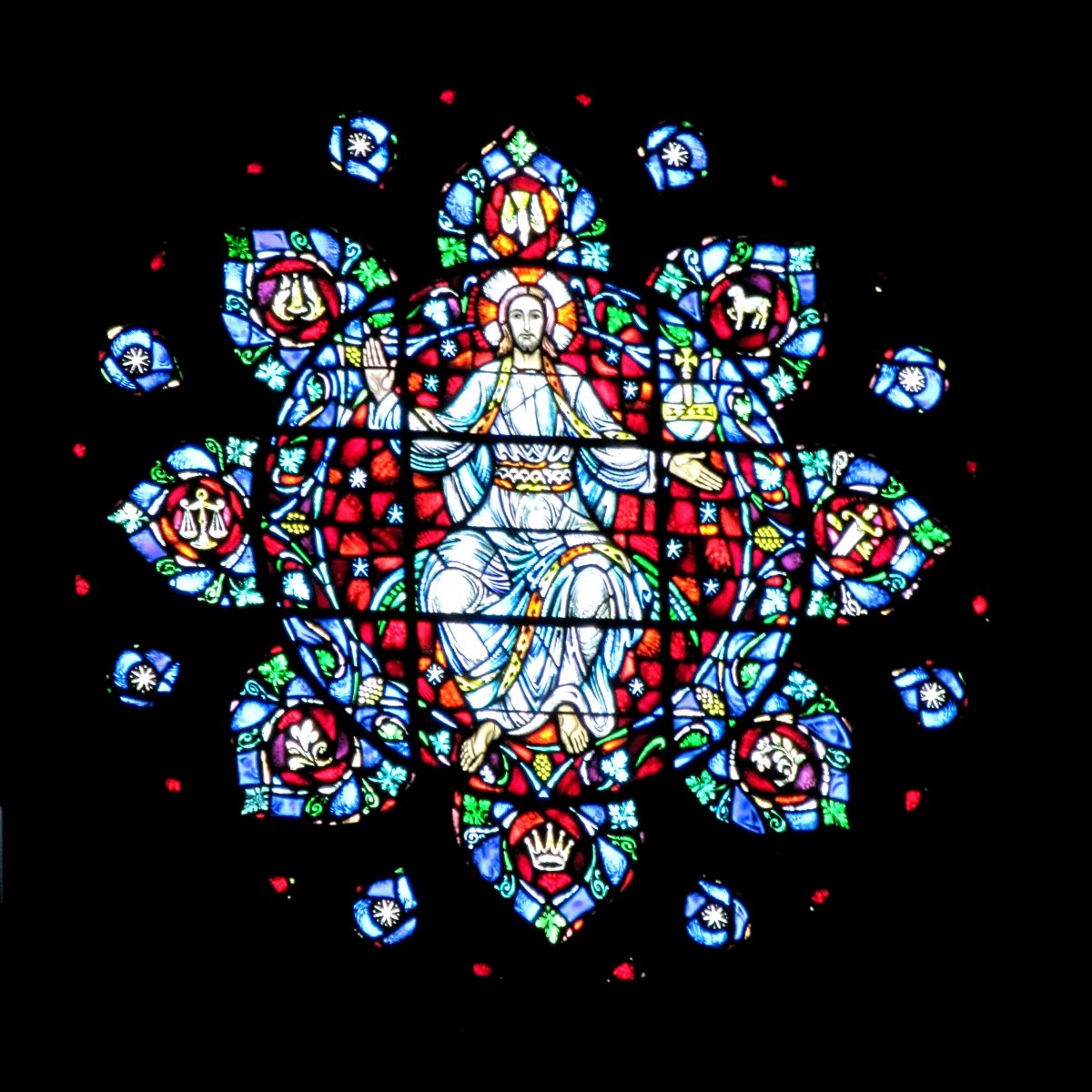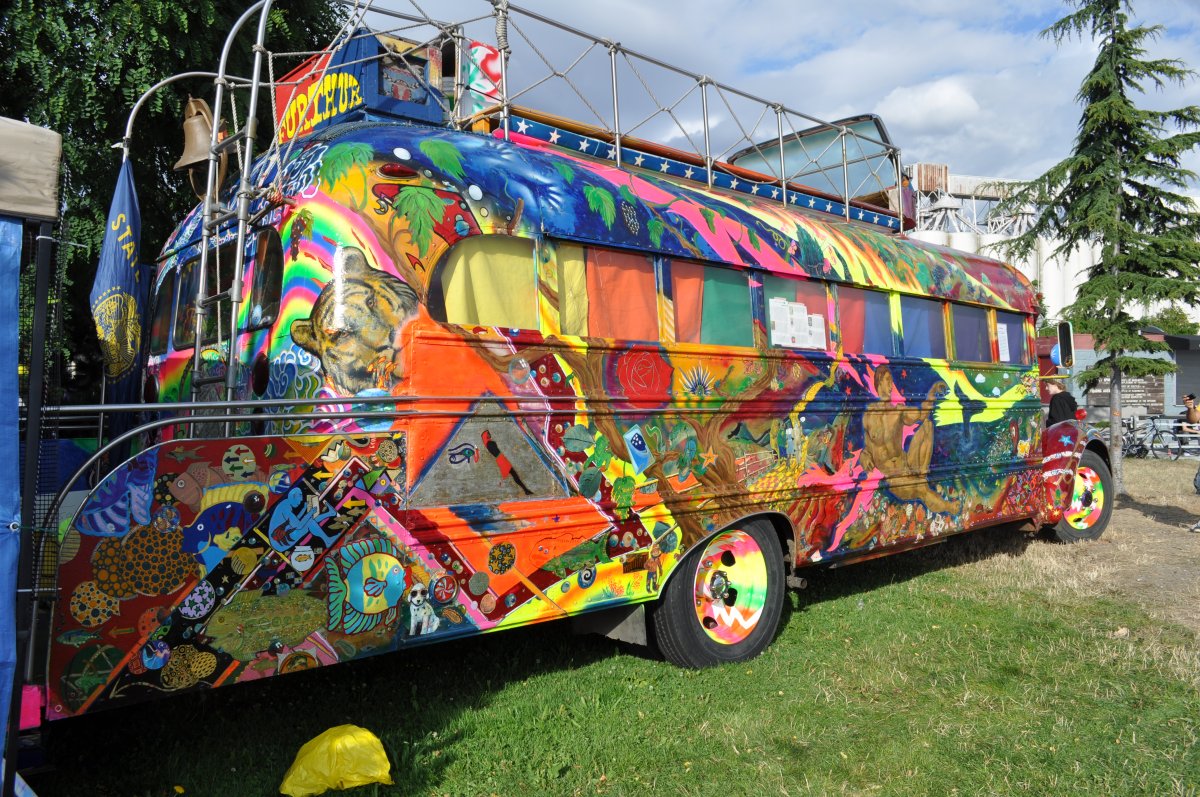December 2015 marks the 50th anniversary of the “Acid Tests,” events held by Ken Kesey and the Merry Pranksters in partnership with legendary musicians The Grateful Dead. Acid, also known as LSD (lysergic acid diethylamide) is a powerful hallucinogen that elicits a variety of psychoactive effects in users. Although the Acid Tests took place over less than one year, their influences continue to ripple through American culture and counterculture.
LSD was first synthesized and tested by Dr. Albert Hofmann in 1943. The CIA experimented with LSD in the 1950s for its potential use in psychological warfare; and in 1975 the United States Army acknowledged that it had administered LSD to nearly 1,500 people between 1956 and 1967 to test the drug’s military potential.
By the early 1960s, several leading universities had begun to investigate the psychological effects and health benefits of LSD. Most famously, between 1961 and 1963, Harvard professors Dr. Timothy Leary and Dr. Richard Alpert (now known as Ram Das) tested Acid for its therapeutic use.
 |
| One stained glass window at Boston University's Marsh Chapel, site of the Harvard Psilocybin Project. |
Leary and Alpert worked together in the psychology department where, according to Alpert, the pair experienced their first psychedelic journey through “magic mushrooms” (a natural hallucinogen producing effects similar to LSD) at varying times in 1961. The experience with mushrooms prompted Leary to work also with Aldous Huxley to secure a supply of synthetic Psilocybin (the active psychedelic ingredient in “magic mushrooms”) from Sandoz pharmacy.
In the Harvard Psilocybin Project, Alpert and Leary proceeded to conduct psychological tests on willing students and on themselves using hallucinogens such as Psilocybin and LSD. They were dismissed from Harvard in the spring of 1963, with the university particularly angered that the tests were conducted on its students.
After universities restricted Acid research on their campuses, the next phases of experimentation occurred in unofficial, grassroots type settings. Kesey first used LSD in one of the CIA’s secret trials (Project MKUltra, often dubbed the CIA's “mind control program”). However, his 1965-1966 Acid Tests helped make LSD more accessible to the general public, especially on college campuses. For countercultural devotees of Acid, using the drug promised psychological, social, and other kinds of liberation.
In 1964, a group called “The Merry Pranksters” took a trip across the country in a rainbow bus named “Furthur.” Once The Pranksters arrived on the west coast they quickly befriended the band “The Warlocks” (later known as The Grateful Dead). Between 1965 and 1966 the Pranksters convinced the Dead to sit as the house band for Ken Kesey’s Acid Tests.
 |
| Merry Pranksters' famous (2nd) bus known as "Further." Recently restored and pictured here at Hempfest 2010, Myrtle Edwards Park, Seattle, Washington. |
The Tests involved the group traveling around California, administering LSD to willing participants, and putting on various art performances. The first Test took place on December 4, 1965 in San Jose, California and the last two occurred in San Francisco on October 2 and 31, 1966 when the pranksters held their “Closing Jam” and “Graduation Jam.”
Two years later, author Tom Wolfe brought the Acid Tests to a much wider audience with the publication of his book The Electric Kool-Aid Acid Test, perhaps the most popular example of the “New Journalism.”
After the end of Kesey’s Acid Tests, LSD began to take on a more spiritual and revolutionary meaning for the individuals who “turned on” to the drug during musical and counterculture events of the late 1960s. LSD journeys or “trips” became more informal and focused on an individual’s journey through their own body and mind and the connection formed with other likeminded people.


“Can You Pass the Acid Test? The happeners are likely to include The Fugs, Allen Ginsberg, The Merry Pranksters, Neal Cassady, Roy's Audioptics. The Grateful Dead,” 1966 (left). “Can You Pass the Acid Test?” 1966 (right).
The legacies of the short-lived Acid Tests are still with us today. Through the grassroots acid experimentation started by Ken Kesey, the Pranksters, and the Grateful Dead in 1965, LSD became a central part of the influential hippie subculture of the late 1960s and early 1970s. The drug acted as a revolutionary tool and language that allowed a growing youth counterculture to cohere and speak out against mainstream social and political institutions, including the U.S. war in Vietnam.
Leary, for one, promoted ideas such as “turn on, tune in, drop out” and “think for yourself and question authority.”
Moreover, Harvard Acid pioneer Richard Alpert was motivated by his experiences with LSD to seek out spiritual counsel in India, which ultimately led him to author his famous book “Be Here Now” that spoke to countless spiritually oriented hippies, many of whom came to the book through LSD experimentation.
“Be Here Now,” along with other books, brought Eastern spiritual culture (yoga, meditation, Zen culture) into the mainstream of American culture through popular fitness and health, where it remains prominent and vibrant today.
